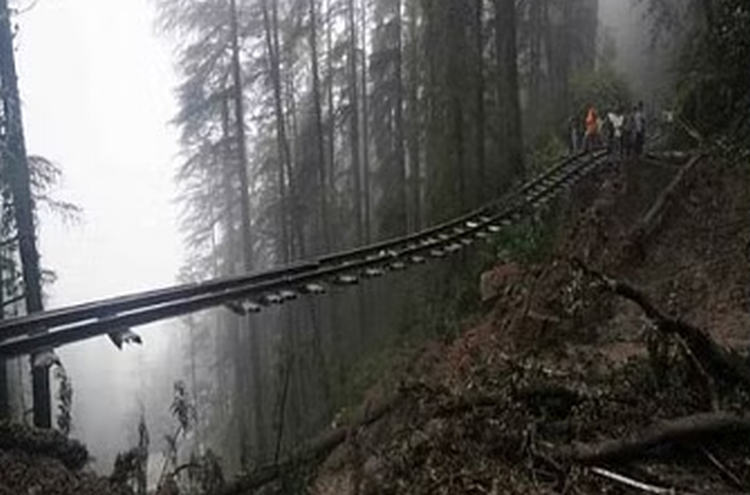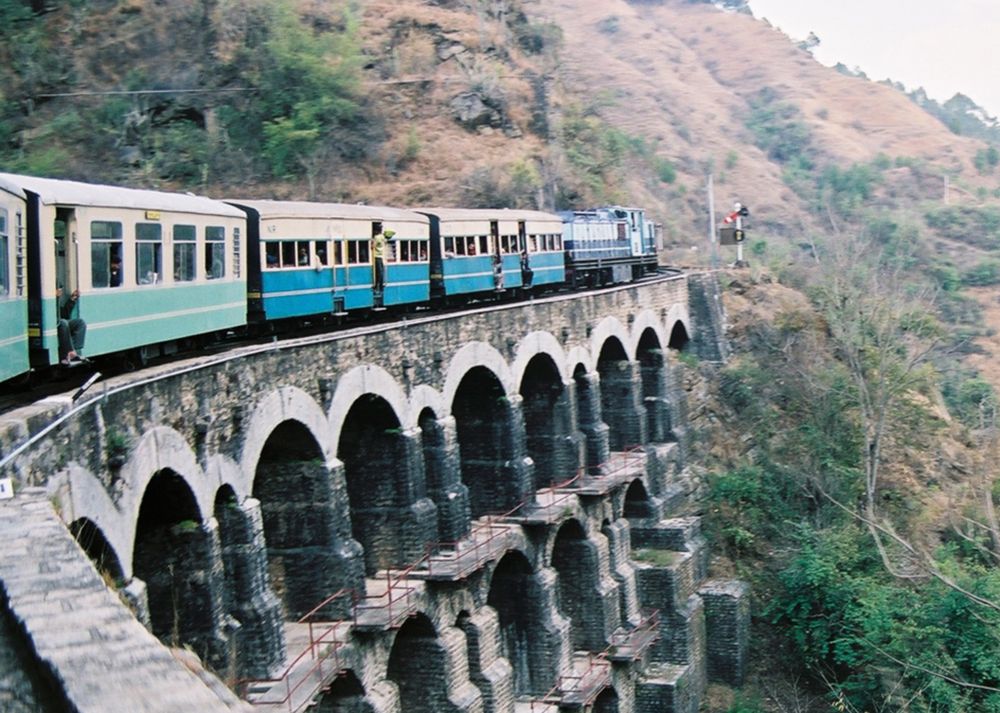Shimla – In a heart-wrenching blow to the historical tapestry of India’s rail heritage, a colossal landslide has inflicted severe damage upon the revered Kalka-Shimla rail route, leaving it teetering on the brink of destruction. The incident, which occurred near the idyllic Summerhill region of Himachal Pradesh’s capital city, has resulted in the suspension of all train operations along this iconic 120-year-old pathway. This marks an unprecedented crisis for the Kalka-Shimla track, signalling an unfortunate chapter in its storied legacy.
Hailed as an architectural marvel, the Kalka-Shimla railway line was brought into existence through painstaking efforts spanning from 1898 to 1903. Its inauguration on November 9, 1903, heralded the commencement of a remarkable journey, forging a vital link between Kalka, situated at an elevation of 656 meters, and the ethereal heights of Shimla, nestled 2,076 meters above sea level.
This monumental undertaking was entrusted to the Delhi-Ambala Company in 1896, a decision underscored by visionary ambition. Stretching across a picturesque 96 kilometers, the Kalka-Shimla rail route punctuates the landscape with 18 stations, each station steeped in tales of travellers whose lives have intersected with its tracks over the passage of time.
However, the significance of the Kalka-Shimla railway line transcends its role as a mere conduit for travel. It is an indelible thread in the cultural fabric of the region, weaving together the stories of locals and wanderers with the awe-inspiring panorama that unfolds beyond the windows. Winding through emerald forests, embracing undulating mountains, and gracing rustic hamlets, the route narrates an enchanting story of natural beauty.
But history resides not just in the landscape but in the footsteps of those who traversed it. In 1921, Mahatma Gandhi, the Father of the Nation, embarked on an iconic journey along this very route. His voyage was more than a physical traversal; it was a representation of India’s unyielding struggle for independence, a powerful echo of the nation’s resilience and determination that continues to course through the veins of the Kalka-Shimla rail.
As authorities labour to gauge the extent of the catastrophe and formulate a comprehensive restoration plan, the incident serves as a poignant reminder of humanity’s vulnerability in the face of nature’s might. The task ahead is monumental, yet history whispers stories of resilience, stories that now beckon those responsible for preserving this cherished heritage.
As the world watches with bated breath, there remains a glimmer of hope that the Kalka-Shimla rail route will emerge from this trial stronger, a testament to the spirit that built it and the determination that sustains it. The threads of history may fray, but they can be rewoven, reminding us that even in the face of adversity, legacies endure, and heritage is not easily erased.








